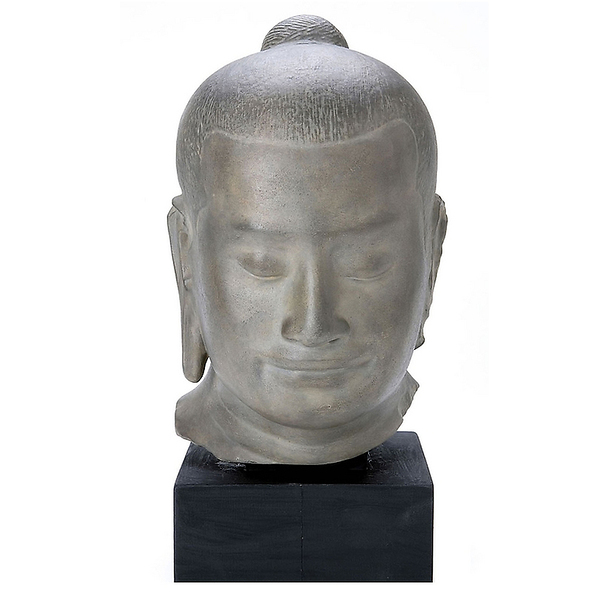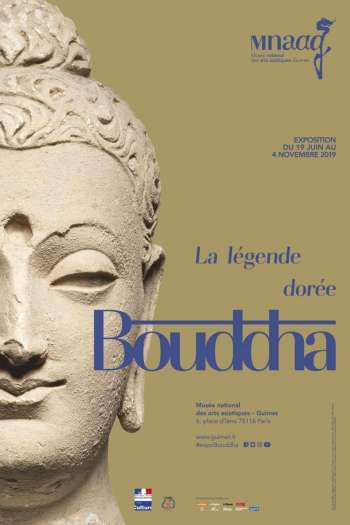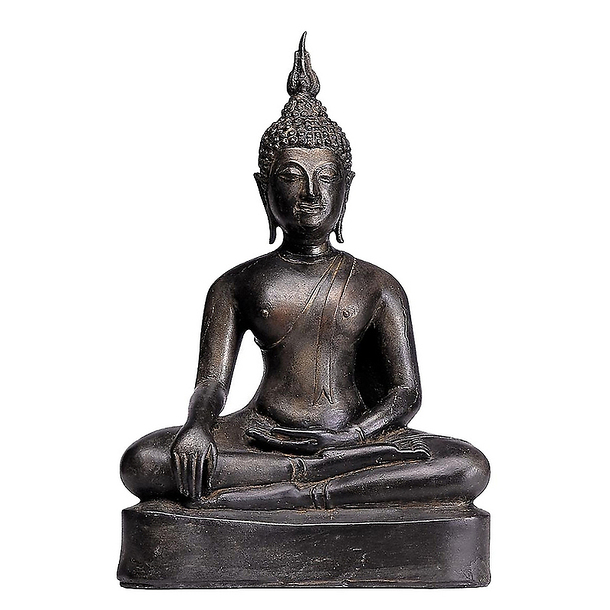
Bouddha Jayavarman VII. From boutiquesdemusees.fr
The Guimet Museum in Paris is hosting an extensive exhibition of 159 artifacts highlighting a wealth of iconographic and stylistic collections of Buddhist antiquities from various periods of Asian history—From India to China to Southeast and East Asia. The exhibition, titled “Buddha, the Golden Legend,” was inaugurated on 19 June and will run until 4 November.
The museum has dedicated the exhibition entirely to the life of the historical Buddha and the spread of Buddhism in Asia—the first such exhibition in France. It explores the circumstances of the appearance of Buddhism in India around the fifth century BCE, then the evocation of the teachings of the Buddha and the doctrinal evolutions that marked its development through different schools of Buddhism: Theravada (the School of the Elders), Mahayana (the Great Vehicle), and Vajrayana (the Diamond Vehicle).
 Buddha, the Golden Legend. From paristribune.info
Buddha, the Golden Legend. From paristribune.infoSophie Makariou, president of the Guimet and an expert on Islamic arts, who is also the exhibition’s curator, and Thierry Zephir, the collections manager of the museum’s Southeast Asia division, worked together for four years in order to create the exhibition, offering visitors key insights into the historical Buddha and the cultures associated with his life.
Speaking about the work of Zephir for the exhibition, Makariou said, “Without his help and deep knowledge of Buddhism we would never have been able to select the iconic 159 works of art from the reserve to illustrate the journey of Buddha through the ages.” (The Jakarta Post)
The items on show consist of images and sculptures of the Buddha collected from countries in which Buddhism and Buddhist heritage are prevalent. The main gallery of the exhibition contains a rich collection illustrating the chronology of the Buddha’s life from his birth as the son of a king in Lumbini in southern Nepal until his great demise at Kushinagar in the modern Indian state of Uttar Pradesh.
Makariou explained that the gallery represents the Buddha himself in many iconographic and aesthetic versions developed in different Asian cultures, including those of Afghanistan, China, Indonesia, and Japan. (Paris Tribune)
The Guimet Museum, located at 6 Place d’lena in the 16th arrondissement (administrative district) of Paris, across the Seine from the Eiffel Tower and a few steps from the Iéna Métro station, was founded in Lyon in 1879 by Emile Etienne Guimet, a French industrialist, traveler, and art lover. Guimet visited Egypt and Greece before traveling around the world in 1876, stopping off in China, India, and Japan. In the course of his travels he acquired an extensive collection of objects which he placed on display in a museum opened in Lyon.
In 1885, Guimet handed this museum over to the state, which transferred the collections to Paris. The museum contains many items he acquired during his travels, and consists of sections such as Afghanistan-Pakistan, Arts of the Himalayas, Southeast Asia, Central Asia, China, India, Japan, Korea, Library Collections, and photographic archives.

Maravijaya Buddha. From boutiquesdemusees.fr

















